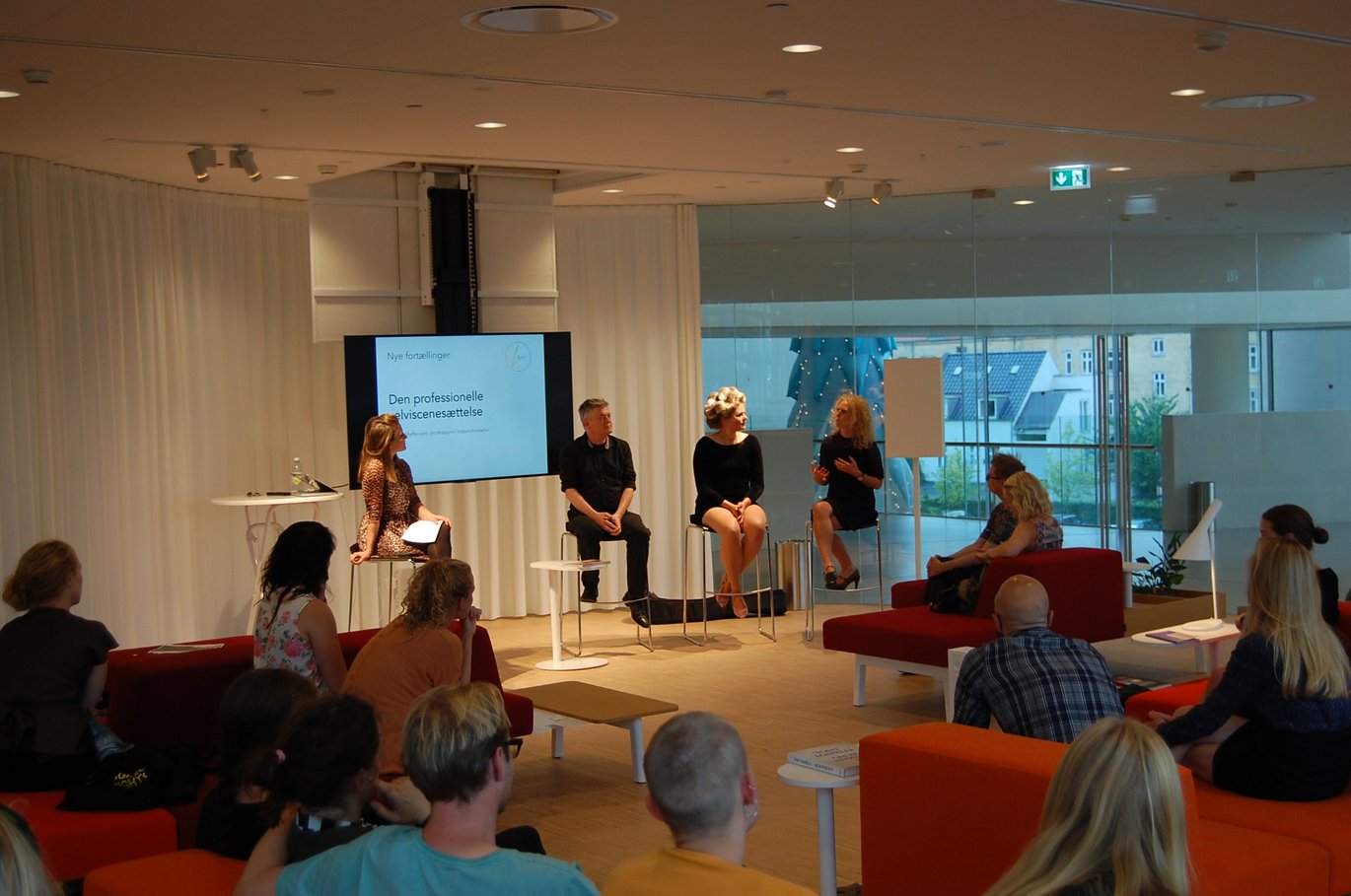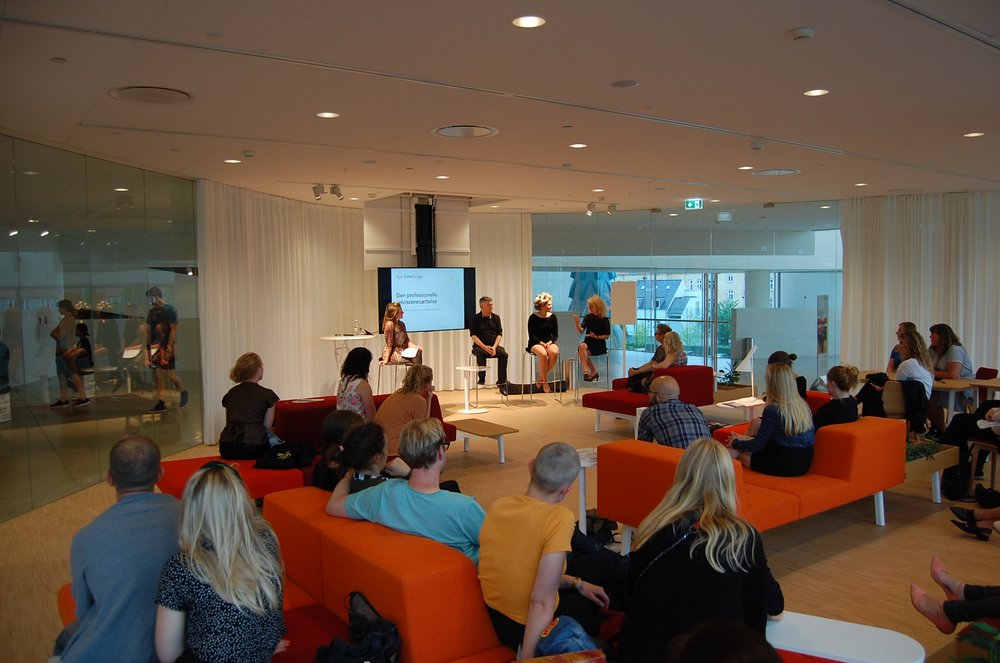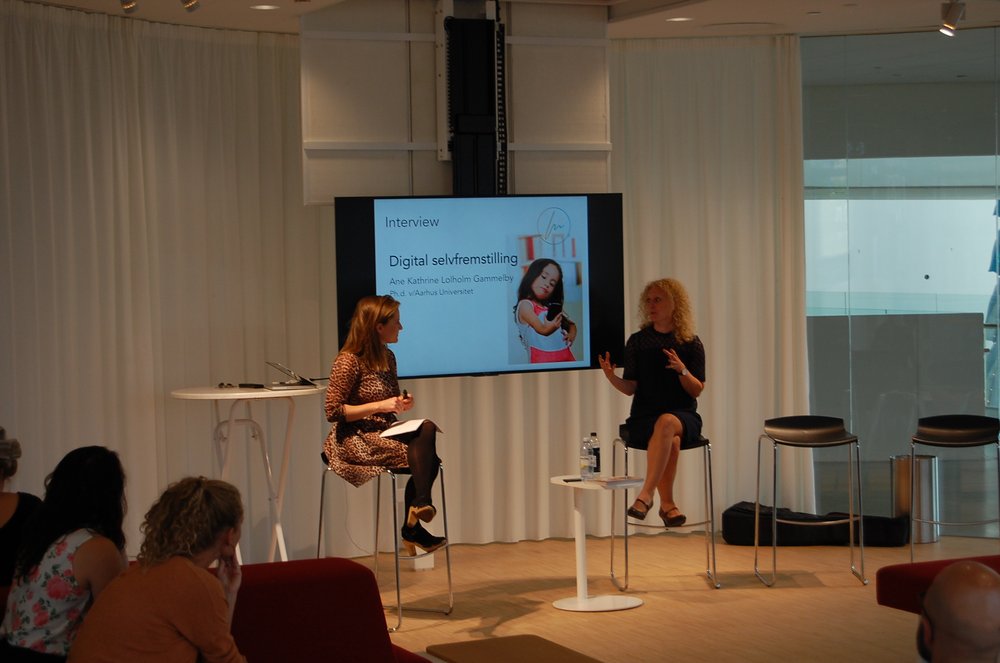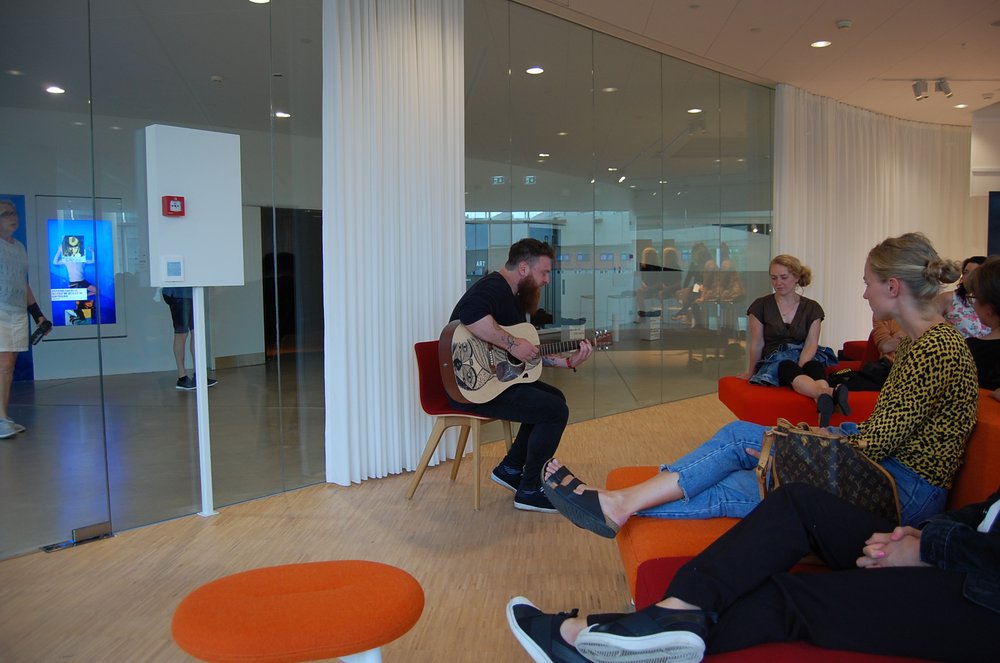Livemagasinet @ ARoS Public: Selviscenesættelse
At this eighth edition of Livemagasinet @ ARoS Public the focus will be how people stage their own life in different ways.

Livemagasinet @ ARoS Public: Selviscenesættelse
On Wednesday 2 August Digital Society’s partner, Livemagasinet, held the first of three events on the theme of “expressions” at ARoS Public – an open forum covering 1,900 square metres which is part of the ARoS art museum in Aarhus. The theme of this first event was “staging your own life”, a trend which is also sometimes referred to as “grandstanding”. There were four guest speakers, each of whom presented their own angle on the way people stage their lives in 2017. The four angles were: science, a personal portrait, music and story-telling. Here are some of the things they talked about.
Science – Ane Kathrine Lolholm Gammelby
Ane Kathrine Lolholm Gammelby, a PhD student at Aarhus University, had been invited along to shed light on the theme of grandstanding from a scientific angle. She explained that the data we produce online on an everyday basis is like an extension of our bodies – so it cannot be regarded as a separate part of ourselves. In other words, we are emotionally connected to the data we produce online – something which becomes very obvious in cases of revenge porn (the distribution of sexually explicit images on the net), she said. It is easy to present data and online behaviour in a negative light, but Gammelby said this was not how she viewed the issue herself. She believes that the new media give us an opportunity to frame the way we stage our lives, thereby allowing us to create the person we want to be. Staging your own life allows you to become the person you want to be – and selfies are a good example of this tendency, said Gammelby. In the past people used to take photos of other people, but nowadays selfies allow you to control the way you present yourself to the world.
A personal portrait – Anna von Aabling
After this presentation of the scientific approach to staging your own life, Julie Krog Vistisen, the founder of Livemagasinet and moderator of this particular event, presented a portrait of as well as interviewed, the designer Anna von Aabling, who she described as a “professional grandstander” and “a countess from a bygone era”. This part of the event focused on von Aabling’s ideas about being herself. Vistisen presented von Aabling’s personal sources of inspiration and experience: von Aabling had been forced to limit the way she expressed herself, but had learned to stage her own life and ignore what other people thought about her. von Aabling’s need to express a degree of pomposity and nobility has resulted in her adopting the name “Countess Lis”, which is what her friends call her. She feels that this name reflects an important part of her, and has even had it put on her front door. When von Aabling was younger, she felt a greater obligation to adjust the way she expressed herself in order to fit in. For instance, when she was a student at Copenhagen Business School she felt she ought to dress in a particular way.
Music – Tobias Kjærside
The third guest in this edition of Livemagasinet was Tobias Kjærside, a musician whose voice and guitar presented an acoustic interpretation of the R&B group Blackstreet’s song “No Diggity”. He said he had chosen this song because grandstanding was common in the music industry, and was also reflected strongly in “No Diggity”. The words of the song focus on a woman’s image and the way she stages her life.
Story-telling – “Martin Steffensen”
The identity of the fourth and final guest had not been announced before the event, but there was a good reason for this. Martin Steffensen was introduced as a “professional story-teller”, and it quickly became apparent that this was just another way of saying that he was some kind of spin doctor. Among other things, Steffensen explained that he had been involved in spreading the story that Helle Thorning-Schmidt’s husband was bisexual. A revelation that generated a tense atmosphere in the room, with Julie Krog Vistisen’s questions becoming more critical. But to the great surprise of the audience, Steffensen actually turned out to be an actor named Henrik Krogh (http://www.klods-hans.com/), who explained that he enjoyed playing unpleasant characters when staging himself, and advised the audience to explore the degree to which they were prepared to stage their own lives.
Interested in attending Livemagasinet @ ARoS Public?
Keep an eye on events on Facebook and read more at Livemagasinet.dk and ARoS Public.




